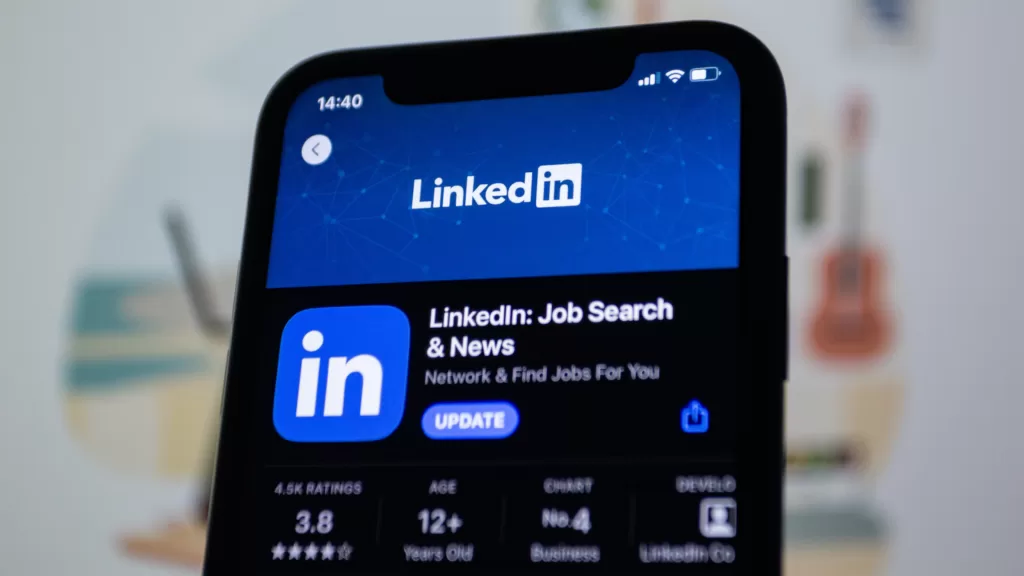In the fast-paced digital age, social media marketing has become a cornerstone of success for businesses worldwide. The surge in its popularity is not merely a coincidence but a result of numerous factors converging in the realm of online advertising and communication. In this comprehensive blog, we will explore, in detail, the reasons behind the exponential growth of social media marketing and the profound impact it has on businesses across the globe.
Introduction
Social media marketing is a compelling force, a game-changer that has redefined the way businesses interact with their audiences. It’s a phenomenon that transcends geographical boundaries, bridging the gap between brands and customers. This blog will take an extensive dive into the various facets of social media marketing, aiming to provide a comprehensive understanding of why it’s on a constant rise.
The Role of Social Media Marketing
To grasp why social media marketing is flourishing, we must first comprehend its role in the broader marketing landscape. At its core, social media marketing revolves around the promotion of products and services through social media platforms. While this might sound straightforward, the true power of social media marketing lies in its ability to facilitate direct and meaningful interactions between businesses and their customers.
The essence of this role can be distilled into three key functions:
1. Establishing Brand Presence: Social media provides businesses with a digital stage to showcase their brand identity, values, and personality. It’s a place where they can craft an authentic narrative that resonates with their target audience.
2. Building Customer Relationships: Social media offers a unique opportunity for businesses to engage directly with their customers. This one-on-one interaction creates a sense of trust and loyalty that is difficult to achieve through traditional marketing methods.
3. Marketing and Advertising: Perhaps the most overt function of social media marketing is promoting products and services. However, it’s not merely about broadcasting messages. It’s about creating content that speaks to the audience’s needs, desires, and pain points.
Factors Driving the Growth of Social Media Marketing
The incredible growth of social media marketing is fueled by several critical factors that have transformed the digital landscape.
The primary driver behind the success of social media marketing is the proliferation of internet usage. As more people gain access to the internet, the potential customer base for businesses grows exponentially. In 2021, the number of global internet users crossed the 4.9 billion mark, a testament to the ever-expanding reach of online platforms.
This surge in internet users opens up vast opportunities for businesses to connect with their audience. Social media platforms, with their billions of active users, provide a goldmine for companies looking to expand their reach and engage with potential customers.
Social media platforms are renowned for their advanced targeting capabilities. Unlike traditional advertising methods, where messages are broadcasted to a wide and often uninterested audience, social media allows businesses to pinpoint their ideal customers.
Through detailed demographics, interests, behaviors, and more, marketers can tailor their content and advertisements to reach precisely the right people. This level of precision minimizes wasted ad spend and maximizes the return on investment. In essence, social media marketing empowers businesses to spend their advertising budgets more efficiently.
Another compelling reason for the growth of social media marketing is its cost-effectiveness. Traditional advertising channels, such as television or print, often require substantial budgets, making it challenging for smaller businesses to compete with industry giants. In contrast, social media marketing offers a level playing field.
Small businesses can harness the power of social media to compete effectively without breaking the bank. They can craft targeted campaigns, create engaging content, and connect with their audience, all at a fraction of the cost of traditional advertising. This affordability is a game-changer for startups and local businesses looking to make their mark in the digital world.
Social Media Platforms and Their Popularity
To understand why social media marketing is booming, it’s crucial to explore the popularity of various social media platforms and their distinct advantages for businesses.
With over 2.8 billion monthly active users, Facebook is a marketing powerhouse. Its diversity in terms of user demographics makes it an ideal platform for businesses targeting a broad audience. Whether you’re selling consumer goods, offering professional services, or promoting a cause, Facebook provides the stage to connect with your audience.
Moreover, Facebook’s ad options, including video ads, carousel ads, and lead generation ads, allow businesses to convey their messages creatively. The platform also offers powerful tools for analytics and tracking, enabling businesses to measure the effectiveness of their marketing efforts.

Instagram, with its staggering 1 billion users, is a visual wonderland. This platform is particularly popular among younger demographics who are drawn to its focus on stunning imagery. If your business thrives on visual content, such as fashion, food, or travel, Instagram is a treasure trove.
What’s more, Instagram has evolved into a direct sales channel for e-commerce businesses. With the introduction of shopping features, users can seamlessly move from admiring a product to purchasing it without leaving the platform. This feature has made Instagram an indispensable tool for businesses in the retail and fashion industries.

Twitter, with its 330 million users, is known for its real-time conversations. It’s the go-to platform for staying updated on breaking news, trending topics, and following thought leaders. For businesses, Twitter provides a unique space to share timely updates, engage in public conversations, and offer customer support.
One of Twitter’s distinctive features is its use of hashtags. These user-generated keywords and phrases can make content go viral, giving businesses a powerful tool to increase their reach and engagement.

LinkedIn is the professional network, boasting more than 700 million users. It is the ideal platform for B2B marketing, networking, and professional connections. Businesses can use LinkedIn to establish thought leadership, share industry insights, and connect with decision-makers in their respective fields.
The platform offers a range of advertising options, from sponsored content to display ads, making it a valuable asset for businesses targeting a professional audience.

TikTok, a relative newcomer in the social media world, has rapidly gained popularity with over 1 billion users. What sets TikTok apart is its focus on short, engaging video content. This format is particularly appealing to younger generations, and it has become the perfect platform for creating creative and engaging marketing campaigns.
TikTok’s algorithm, which serves users content tailored to their interests, provides businesses with an opportunity to go viral. It’s an ideal platform for showcasing products, running challenges, and sharing user-generated content to engage with the audience.

The Power of Visual Content
Visual content, including images and videos, stands as one of the driving forces behind successful social media marketing. It’s more engaging, shareable, and memorable than text-based content. Visuals have the power to convey emotions, tell stories, and captivate the audience, making them an indispensable tool for businesses.
The human brain is wired to process visual information rapidly. In fact, research suggests that people remember visual content better than text. This is why businesses that leverage visuals in their social media marketing campaigns often witness higher levels of engagement and sharing.
Visual content comes in various forms, from stunning product images to informative and entertaining videos. It’s the backbone of platforms like Instagram, Pinterest, and TikTok, where users flock to view and share visually appealing content.
Whether it’s showcasing a new product, telling a brand story through images, or creating how-to videos, visual content can be a game-changer for businesses looking to make a mark in the social media sphere.
Engaging with Your Audience
One of the unique aspects of social media marketing is the ability to engage directly with your audience. Unlike traditional advertising, where communication is one-sided, social media fosters a dynamic and interactive relationship between businesses and customers.
Here’s how social media marketing enables businesses to engage with their audience:
1. Real-Time Interactions: Social media platforms are real-time by nature. This means that businesses can engage with their audience instantaneously. Whether it’s responding to comments, addressing concerns, or joining conversations, the immediacy of social media sets it apart from other marketing channels.
2. Personalization: Social media allows businesses to personalize their interactions with customers. By addressing customers by name, responding to their specific queries, and acknowledging their feedback, businesses can create a more personalized and authentic connection.
3. Feedback and Insights: Social media is a goldmine for feedback and insights. Customers often share their opinions and preferences on social platforms, providing valuable information that businesses can use to improve their products, services, and marketing strategies.
4. Building a Community: Social media enables businesses to create a sense of community around their brand. By fostering discussions, encouraging user-generated content, and sharing customer stories, businesses can build a loyal and engaged following.
The Impact on Brand Awareness
Building brand awareness is a fundamental goal for businesses, and social media marketing excels in this regard. An active presence on social media can significantly impact brand awareness in several ways:
1. Consistent Posting: Regular posting on social media keeps your brand top of mind. When customers see your content regularly, they are more likely to remember your brand and what it stands for.
2. Engaging Content: Social media offers a platform for businesses to create content that engages and resonates with their audience. This engagement not only captures the audience’s attention but also keeps them coming back for more.
3. Shareability: Social media content is highly shareable. When users find something interesting, entertaining, or informative, they are likely to share it with their network. This sharing extends your reach, potentially exposing your brand to a broader audience.
4. User-Generated Content: Encouraging customers to create and share content related to your brand is a powerful way to boost brand awareness. User-generated content serves as social proof and can influence others to try your products or services.
5. Social Advocacy: When customers have a positive experience with your brand, they may become advocates on social media. Advocates actively promote your brand, share their experiences, and recommend your products or services to their network.
The impact of social media on brand awareness is profound. It allows businesses to not only introduce themselves to a global audience but also create a strong and recognizable brand identity.
Measuring Success
A notable advantage of social media marketing is the ability to measure success accurately. Unlike traditional marketing methods, where measuring the effectiveness of an advertising campaign can be challenging, social media provides a wealth of data and analytics.
Here are some key metrics that businesses can track to measure the success of their social media marketing efforts:
1. Engagement Metrics: Engagement metrics include likes, comments, shares, and clicks. These metrics indicate how the audience interacts with your content and brand. High engagement rates are a positive sign that your content is resonating with the audience.
2. Reach and Impressions: Reach is the number of unique users who have seen your content, while impressions represent the total number of times your content has been displayed. Monitoring reach and impressions helps you understand how far your content is spreading.
3. Click-Through Rate (CTR): CTR measures the percentage of people who clicked on a link or call-to-action within your content. It’s a critical metric for assessing the effectiveness of your content in driving traffic or conversions.
4. Conversions: Conversions represent specific actions you want users to take, such as signing up for a newsletter, making a purchase, or filling out a contact form. Tracking conversions helps you measure the direct impact of your social media marketing on your business goals.
5. Follower Growth: Monitoring the growth of your social media following provides insights into the health of your audience. A steadily increasing follower count is a positive indicator of your brand’s popularity.
6. Return on Investment (ROI): ROI measures the revenue generated in relation to the cost of your social media marketing efforts. Calculating ROI allows you to determine the profitability of your social media campaigns.
Access to these metrics empowers businesses to make data-driven decisions. By analyzing the data, they can identify what’s working, what’s not, and how to refine their strategies for better results. This ability to measure success sets social media marketing apart from many traditional advertising methods that lack such precise analytics.
Staying Current with Trends
The dynamic nature of social media necessitates staying current with the latest trends. Social media platforms are in a constant state of evolution, introducing new features, changing algorithms, and responding to user behaviors.
To remain competitive and maintain a successful social media presence, businesses must actively adapt to these changes. Staying updated with the latest trends is crucial for several reasons:
1. Algorithm Changes: Social media platforms frequently update their algorithms to enhance user experiences. These changes affect how content is shown to users. To maintain visibility and engagement, marketers must understand these algorithms and adapt their content strategies accordingly.
2. User Behavior: As social media evolves, so does user behavior. Businesses must stay attuned to shifts in how users interact with content, what they expect from brands, and how they make purchasing decisions.
3. New Features: Social media platforms regularly introduce new features and tools for businesses. Staying informed about these features and experimenting with them can give businesses a competitive edge. For instance, features like Stories on Instagram or Reels on TikTok are opportunities for creative and engaging content.
4. Emerging Platforms: New social media platforms emerge, and some gain rapid popularity. Being among the early adopters of these platforms can provide businesses with a first-mover advantage. However, it’s essential to evaluate whether a new platform aligns with your target audience before investing heavily in it.
Adapting to the ever-evolving landscape of social media is both a challenge and an opportunity. It’s a challenge because it requires continuous learning and adaptability. It’s an opportunity because being at the forefront of emerging trends can give your brand a competitive edge and allow you to connect with a broader and more engaged audience.
Challenges in Social Media Marketing
While the benefits of social media marketing are significant, it’s not without its challenges. Here are some of the primary hurdles that businesses encounter:
Social media platforms regularly tweak their algorithms to enhance the user experience. These changes can significantly impact how content is displayed to users. For businesses, this means that a strategy that was effective yesterday may not yield the same results tomorrow.
To navigate these algorithm changes, businesses must:
– Stay informed about updates and announcements from social media platforms.
– Analyze the impact of algorithm changes on their content’s reach and engagement.
– Experiment with new content strategies to align with algorithmic preferences.
– Monitor the performance of content and adjust strategies based on data.
Adapting to algorithm changes is essential to maintaining visibility and reach on social media platforms.
The growth of social media marketing has led to increased competition. As more businesses realize the
potential of social media as a marketing channel, the digital landscape becomes crowded. To stand out, businesses must continually strive for creativity and innovation.
Competition necessitates businesses to:
– Create unique and attention-grabbing content that sets them apart from competitors.
– Study the content and strategies of competitors to identify gaps and opportunities.
– Engage with the audience authentically to build brand loyalty.
– Continuously analyze and optimize their content and advertising efforts.
While competition is a challenge, it also fuels creativity and innovation, pushing businesses to elevate their marketing strategies and deliver exceptional value to their audience.
Conclusion
In Conclusion, the thriving landscape of social media marketing is driven by factors such as increased internet usage, targeted advertising, and cost-effectiveness. Popular platforms like Facebook, Instagram, Twitter, LinkedIn, and TikTok offer businesses diverse audiences and dynamic advertising options. Visual content, direct audience engagement, and brand building are paramount. Measuring success through precise metrics empowers businesses to refine strategies. Staying current with trends and navigating challenges, including algorithm changes and heightened competition, are essential. Social media marketing is not a passing trend but a fundamental shift in how businesses connect with their audience, with its impact set to endure.
FAQs
1. Is social media marketing suitable for all types of businesses?
– Yes, social media marketing can benefit businesses of all sizes and industries. The key is to tailor your strategy to your specific goals and target audience.
2. How can I keep up with the latest social media marketing trends?
– To stay current with trends, follow industry blogs, attend webinars, and experiment with new features on social media platforms. Additionally, connecting with marketing communities and networks can help you stay informed about emerging trends.
3. What is the biggest advantage of visual content in social media marketing?
– Visual content’s biggest advantage is its engagement potential. Images and videos are more eye-catching and shareable, increasing the chances of your content reaching a broader audience. Visual content also has a powerful storytelling capability, allowing businesses to convey their brand identity and messages effectively.
4. How can I measure the success of my social media marketing efforts?
– You can measure the success of your social media marketing efforts through various key metrics, including engagement rates (likes, comments, shares), reach and impressions, click-through rates, conversions, follower growth, and return on investment (ROI). It’s crucial to set clear objectives and track these metrics to evaluate the impact of your campaigns accurately.
5. What should I do when a social media platform changes its algorithm
– When a social media platform changes its algorithm, businesses should:
Adapting to algorithm changes is crucial for maintaining your brand’s visibility and effectiveness on social media platforms.
©2023.Tyyro Media.All Rights Reserved.